Raleigh’s Enigmatic Buddha Wall — Brought to Light by VAE
I cannot wait until Thursday! Not only will Raleigh’s Visual Art Exchange be celebrating the opening of their new digs at 309 W. Martin St., but the long-lost and forgotten iconic  ‘Buddha Wall’ will be made available for public viewing for the first time in more than 20 years.
Visual Art Exchange (VAE) has long had an active presence in downtown Raleigh.
Founded in 1980, VAE is a non-profit creativity incubator and gallery that supports and educates emerging, professional and student artists. Each year VAE exhibits the work of more than 800 artists in 60 exhibitions and hosts more than 50 educational programs. VAE also is the force behind SPARKcon, an interdisciplinary art and design festival in Downtown Raleigh.
Since 1996 VAE has occupied cramped quarters in City Market. Now, 15 years later, the gallery is moving to a newly renovated space in the Warehouse District. The former plumbing supply distribution building at 309 W. Martin St., at 4,000+ sq. ft., is more than three times the size of the City Market venue. The Exchange Gallery and main gallery spaces are now doubled in size at the new location. VAE has also added a new exhibition space called ‘The Cube.’ The Cube will allow for a year-round schedule of exhibitions and an expanded opportunity for artists who work in alternative media.
The renovation was designed by Raleigh architectural and design firm, Clearscapes. Their able staff made a significant effort in the development of the necessary construction documents for the project.  Clearscapes’ design was beautifully realized by Emmco Construction, LLC, of Raleigh.
This is how the space appeared shortly after demo had been completed in June.
Work was underway non-stop this summer at 309 W. Martin St.
VAE is ‘the new kid’ on the block, joining  established galleries in the neighborhood such as Flanders, Designbox, 311 Galleries and Studios and the recently opened Contemporary Art Museum. Additionally, architects, artists’ and photographers’  studios, a fashion design studio and an antiques dealer are also located in the area. Clearly, the Warehouse District seems to be emerging as Raleigh’s premier arts destination.
Tomorrow night from 7-10 pm VAE will celebrate the move to their new space with a gala VAE Preview + Celebration. Tickets may be puchased online. A free public reception will be held First Friday on Sept. 2.
But … before it was VAE, 309 W. Martin was the Warehouse District home of The Paper Plant, the central venue for Raleigh’s emerging artists community of the 1980s.
I snapped this shot of 309 W. Martin St. in 1973. The Paper Plant moved into this building in 1985.
The independently-owned book store and art gallery promoted local artists, hosted poetry readings and papermaking workshops, and presented more than 30 major exhibitions of local artists during its tenure, 1985-1990. Among these was a collaborative installation show in 1987 by Raleigh artists Ron Ridgeway and Dan Clower.
Ridgeway took on the challenge of creating what has come to be known as “The Buddha Wall.” In the far nether reaches of the Paper Plant is a subterranean and long-abandoned boiler room. It was here that Ridgeway chose to install his creation.
This is the boiler room where the Buddha Wall was installed. (The boiler itself has been long-since removed.)
The Buddha Wall consists of a patterned series of 225 individual Buddha figures painted onto a brick wall measuring approximately 20′ x 12′. The gridded composition is accentuated by three large ‘cartouches,’ each representing a particular aspect of the Buddha’s life.
The central cartouche represents the Buddha’s Enlightenment.
This cartouche represents a youthful Buddha seated on his lotus throne.
Ridgeway’s inspiration to create the Buddha Wall entered through an unexpected portal —  an art book documenting the discovery and preservation of a 500 year old wall painting in a remote Tibetan monastery. For the project the artist says “I wanted to do something anti-commercial. It had to be something created for the viewer’s personal joy in the moment” — in other words, an installation.
The repeated, rhythmic pattern of the Buddha figures is meditative — hypnotic, even.
Ridgeway began the work by priming the brick wall with a gesso suface, and then gridded it out in order to guide the creation of the series of figures. The three large cartouches were not a part of the original scheme, but evolved as the ‘series of units,’ as the artist refers to the pattern of figures and arches, came together.
Ridgeway used artist’s acrylic as his medium, and then upon the completion of the work, covered the entire wall with a protective coating of gloss ‘roplex.’ He derived his color palatte from those colors specific to Buddhist philosophy.
Every single one of the 225 Buddha figures is different. Ridgeway would often spend a day or more on painting particular features, such as all the hands one day, and the eyes the next. In that way the artist could develop the individuality of each figure, and not fall into monotonous repetition.
Not only are the Buddhas all different, one from the other, but Ridgeway incorporated facial features of many of his friends into some of them as well. (My portrait is supposedly in there somewhere!)
The Buddha Wall is a fascinating work of art! The brick wall adds a third dimension to otherwise flat paint.
The colors are quite brilliant, even after all this time.
Oh, in case you are wondering, the painting of the Buddha Wall required 500+ hours of work over the course of a full year.
On a personal note: I had not seen the Buddha Wall for more than 20 years until this past June, when I and fellow GNR contributor, Ian F.G. Dunn, were invited by VAE board member Jon Zellweger to photograph it. Minor water damage notwithstanding, I was surprised to find it in such good shape. Sadly, part of the original installation, a construction of additional Buddhas at the end of the room, had disappeared. Nontheless, the overall presence of the Buddha Wall emerging eerily from the darkness as my eyes adjusted to the low light of the old boiler room was overwhelming.
The Raleigh arts community will be forever grateful to VAE and Clearscapes for their active role in preserving this unique and remarkable example of an early avant garde installation by a local artist.
Photographing the Buddha Wall.
I would like to recognize, and offer my sincere thanks and gratitude to Ron Ridgeway, John Dancy-Jones, VAE, Sarah Powers, Jon Zellweger, and Mike Martin for their generous cooperation and assistance in helping to bring Raleigh’s enigmatic Buddha Wall back into the light.
Magic at the Buddha Wall. Kinetic light sculpture by Johnny Dickerson, courtesy VAE.

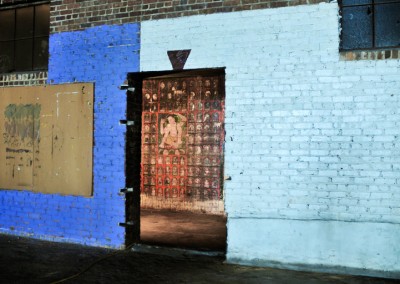
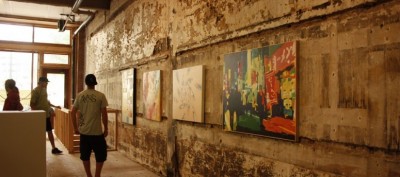

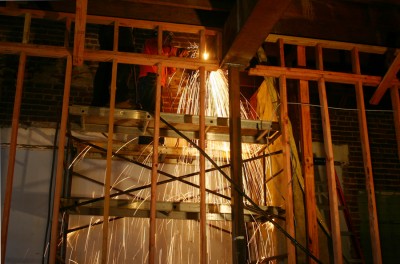

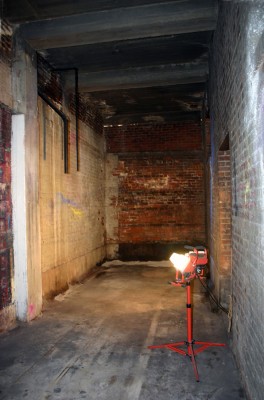

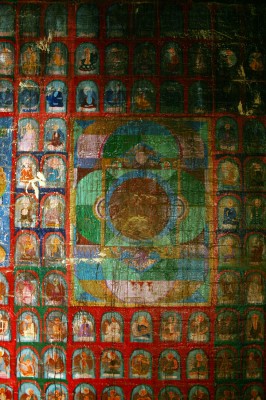
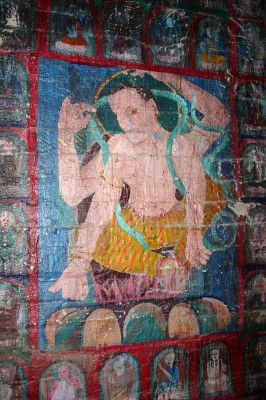

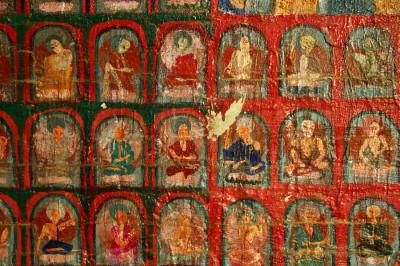

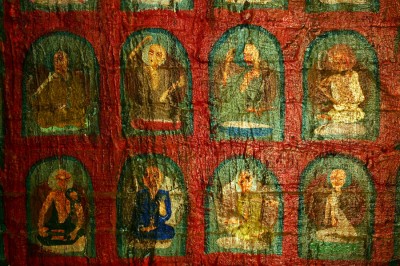

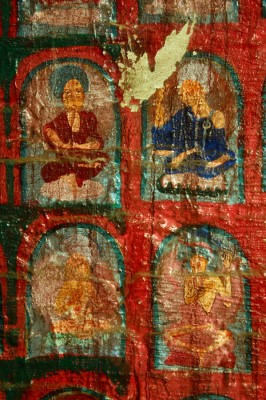

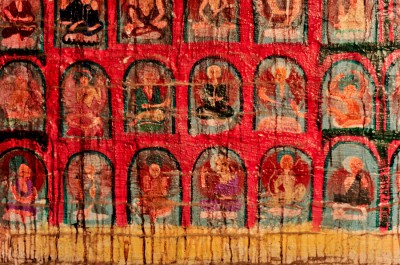
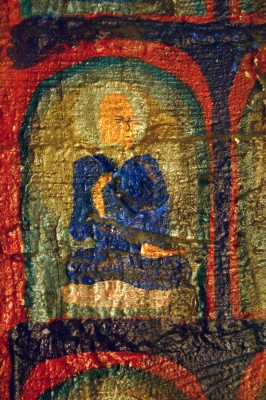

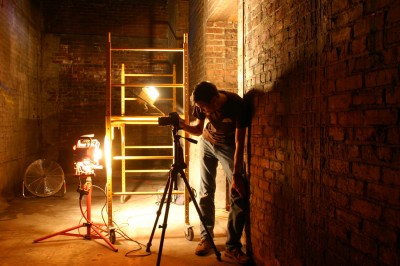
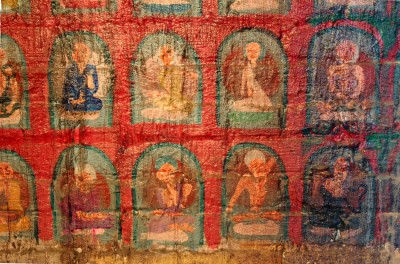
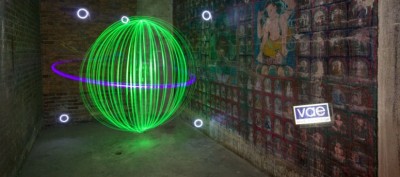
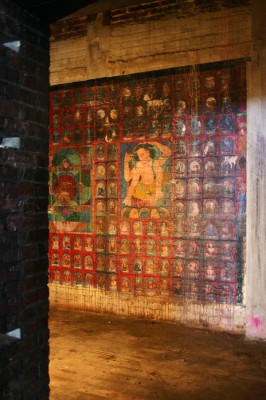
 Sign up for the Newsletter
Sign up for the Newsletter
08/31/2011
I remember that incredible time of energy in the 80s when artists rented studios from us; body painting, performance art, lively opening receptions, the yearly Cheap Art Show in December, and weekly Thursday night poetry readings with a ten minute limit. Musicians played on the old piano and Sohos were always for sale; John’s shop dog Dulci slept on the empty stage, and a collection of folks from the streets frequented the establishment because the proprieter was a kind soul who loved listening to their rantings about society. The whole store was often filled with the odor of fresh pulp for the papermaking vats. By the end of it, our two babies brought us great joy, and eventually John and I focused on teaching school and raising a family. The Paper Plant morphed out of retail and into our basement, shed, and now is resurfacing as a blog.
This article made me miss the old days and the magic of that space.
Thanks for your beautiful photographs and description of this legendary work of art, Carl. What a moving gift of the past you have given us. xoxo
08/31/2011
Karl has given all of us a wonderful look at Ron Ridgeway’s amazing art, and I’ll tell you : we never saw it like this back then. The installation was part of a much larger show and I now know that I never gave it the attention it deserved. (it was rather dark and candle-lit back then). The show included the large body painting Cara mentions, lots of Joseph Cornell type boxes and of course the wonderful paintings of Dan Clower as well as paintings by Ron. It was my favorite Paper Plant reception – Irregardless staff created a totally white spread – all the food and drink – everything – except for the numerous plastic black ants scattered across it all. The body painting had been created by 6 people over on West Johnson – in Christine Baukus’ studio, about the time she was helping to send David Larson to Morocco. That trip engendered a fund raiser at The Paper Plant – VAE’s 309 W Martin – which presented the first public appearance of The Back Girls – this was pre-Holly, with Cloey on violin. Ron and Dan were renting a studio from us – thus the opportunity for such laong-term work. Those were the days – or not. Doonesbury calls the 80’s an armpit of a decade, and they were. But that’s why we had to do the work we did!! We survived Reagan, and we’ll probably survive Obama/Tea Party too. Ya’ll take care – stay awake!
Thanks to Cara for the previous comment, and to all the incredible Paper Plant artists through the years. Good luck, VAE. thanks, Karl.
09/01/2011
Thanks for this great piece of work!
09/02/2011
Where is the “donate to Goodnight Raleigh” button? Thanks again for great journalism
09/03/2011
Thank you Esteban — buy City Blox!
09/03/2011
Thanks John and Cara for sharing your vivid recollections with our GNR readers! Those days were awesome indeed!
09/30/2011
thanks so much, I never saw this but I move back to Wilmy in 85, and stopped working Raleigh in 92, when Shriver freaked out and left in the middle of way too many projects ,,, being Buddhist and from raleigh, I would like to see this and I vaguely remember Ridgeway, was he a Noah’s food COOP member maybe?
anyway, a great post
09/30/2011
anyone seen Phillip Lopez? is he still at the Museum of Art, he had a studio there also I believe